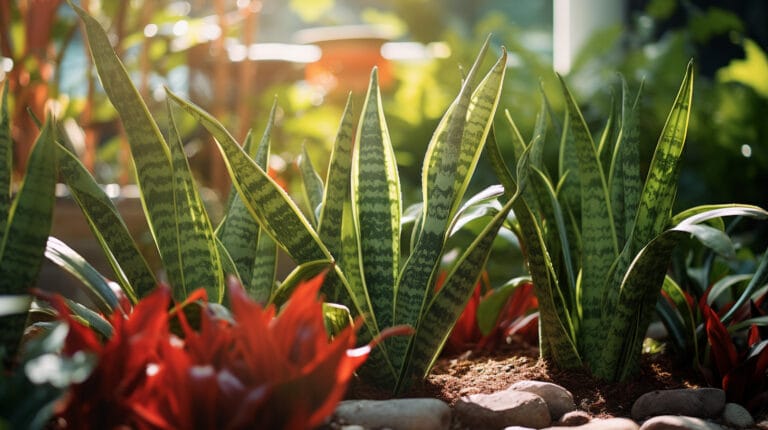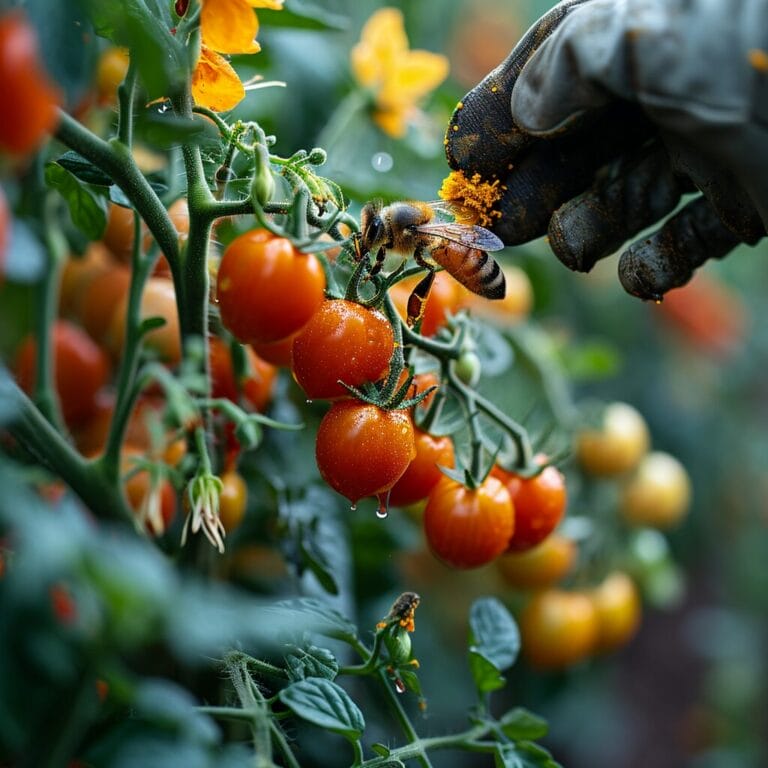Being a cat owner, you might be drawn to the charming and robust pothos plant for your indoor garden. Nonetheless, it is crucial not to overlook possible dangers this plant may pose, despite it being captivating to our feline friends.
It’s essential to understand which plants, including the seemingly benign pothos, could transform your haven into a danger zone for your furry friend. This guide will arm you with knowledge and strategies to foster a harmonious living space for both your cat and your indoor plants.
By the end of this article, you will be equipped to not only identify potential dangers but also cultivate a pet-friendly environment anchored by informed decisions and vigilant care.
Key Takeaways
- Pothos plants can be toxic to cats due to the presence of insoluble calcium oxalate crystals.
- Symptoms of pothos ingestion in cats include oral irritation, burning of the mouth, excessive drooling, vomiting, and difficulty swallowing.
- Immediate veterinary attention is required if these symptoms are observed.
- Preventive measures such as keeping pothos plants out of reach and using pet-friendly alternatives can ensure the safety of cats.
Understanding Pothos Plants and Their Toxicity to Cats
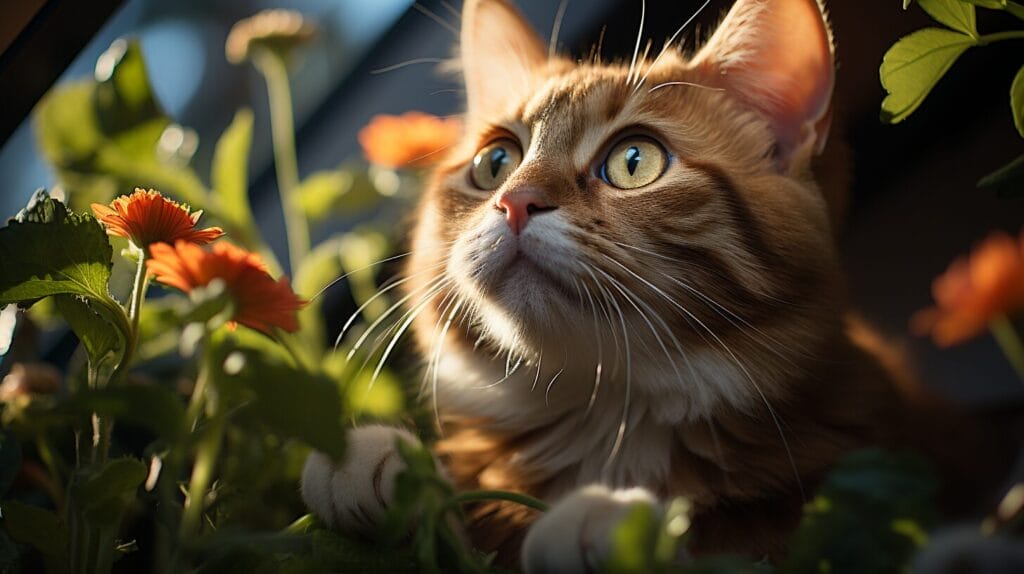
Pothos plants, with their cascading vines and heart-shaped leaves, are attractive for their air-purifying qualities and minimal care requirements. However, cat owners must be aware of the inherent risks these parts of the plant pose, especially the pothos leaf.
Pothos are toxic to cats because they contain insoluble calcium oxalate crystals. When a cat chews on the leaves or stems, these crystals can cause oral irritation, intense burning of the mouth, excessive drooling, vomiting, and difficulty swallowing.
If you observe any signs of golden pothos poisoning in your pets, immediate veterinary attention is required. Remove any parts of the house plant, especially if it’s pothos, from your cat’s mouth and seek professional help.
To ensure both pothos plant care and pet safety, keep the plants out of your cat’s reach or choose pet-friendly alternatives, and train your cat to avoid plants.
Recognizing Symptoms of Pothos Poisoning in Cats

Being able to promptly identify the signs of pothos poisoning is vital for your cat’s health. Symptoms of golden pothos poisoning may range from mild to severe and include oral irritation, drooling, vomiting, and difficulty swallowing.
If your cat has ingested pothos, swift and composed action is crucial. Emergency contact numbers should be at hand, and a pet first aid kit should be accessible. Preventive measures are the best defense—keep pothos and other toxic plants out of reach.
Responding to Pothos Plant Ingestion by Cats

If your cat ingests pothos, remove any remnants from their mouth and contact your vet immediately. The severity of the symptoms depends on the amount consumed, and reactions can vary. Your vet may provide pain relief, fluids, and monitor kidney functions. Remember, early intervention in pothos toxicity is key to a full recovery.
Keeping Cats Safe Around Pothos and Other Toxic Houseplants
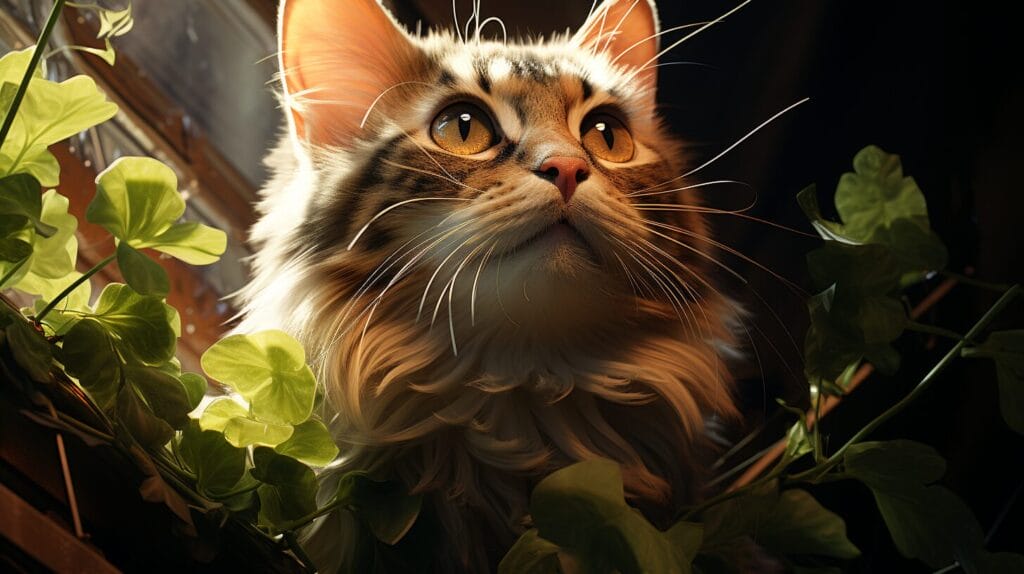
Preventing access to toxic plants is the most effective way to protect your cat. Be proactive in learning which house plants are toxic to dogs and cats, how to identify symptoms of ingestion, and understand the specifics of pothos toxicity. Consider elevated shelves or hanging planters for toxic plants, use deterrents to discourage nibbling, and provide safe alternatives like cat grass.
Maintaining Pothos Plants in Your Home Safely
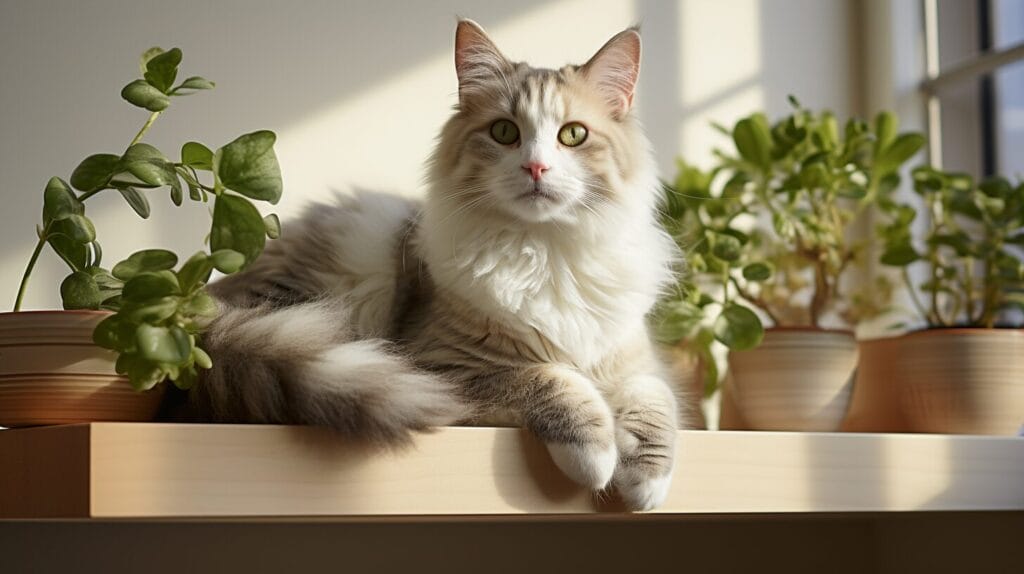
With some strategic placement, you can enjoy pothos plants without putting your cat at risk. Keep them on high shelves or behind barriers and use natural repellents to keep your cat at bay. Regular monitoring of plant placement and your cat’s behavior will help maintain a safe environment.
Conclusion
Understanding the dangers of pothos plants to cats is essential for any pet owner. Recognize the signs of toxicity and act swiftly if your cat interacts with these plants.
By cat-proofing your plant collection and opting for safer alternatives that are safe for cats, you can enjoy a green home without compromising your cat’s safety. Your vigilance will ensure that your furry companion remains curious and safe in your indoor garden.
Frequently Asked Questions
Is golden pothos poisonous to cats?
Yes, the golden pothos plant is poisonous to cats. It contains insoluble calcium oxalate crystals which can cause harm to cats when ingested.
Are all parts of the pothos plant toxic to cats?
Yes, all parts of the pothos plant are toxic to cats. The plant contains insoluble calcium oxalate crystals that can cause significant harm if ingested.
How dangerous is golden pothos to cats?
Golden pothos is considered dangerous for cats. Its toxins can cause a range of symptoms, including difficulty swallowing and vomiting, which can cause dehydration.
How can I prevent my cat from eating poisonous plants?
Keep your cat away from the golden pothos, and consider getting a cat grass kit, which allows your cat to satisfy its urge to munch on greens safely. You can also provide a variety of engaging toys and activities to keep your cat distracted from the plants.
Are pothos plants also toxic to dogs?
Yes, just like cats, golden pothos, containing calcium oxalate crystals, are also considered toxic to dogs. They contain calcium oxalate crystals, a compound notably present in pothos plants, which can cause similar symptoms in both cats and dogs when ingested.




